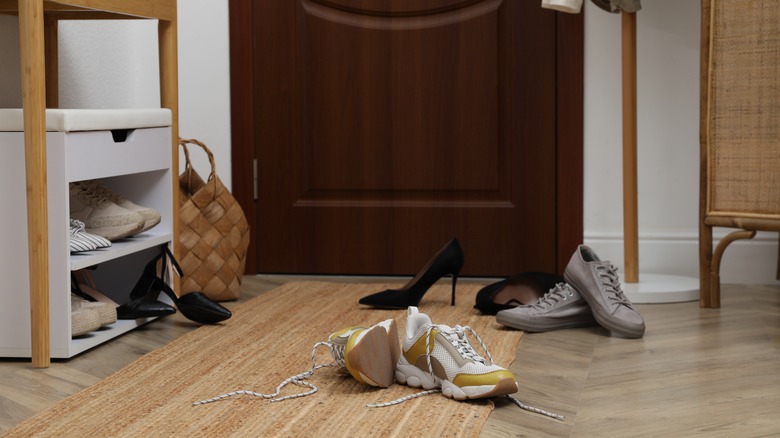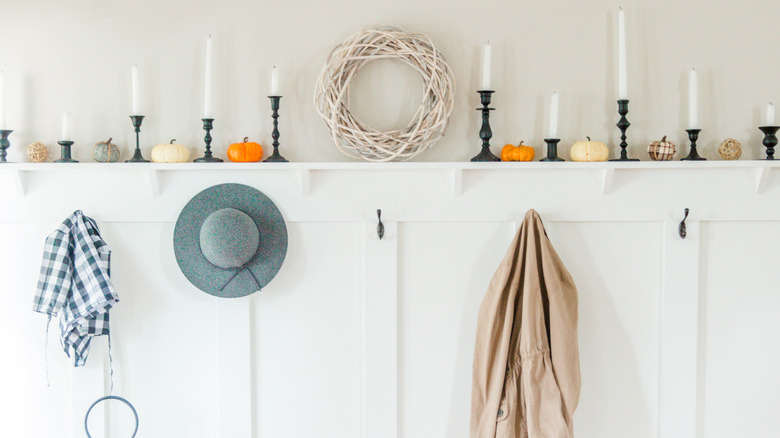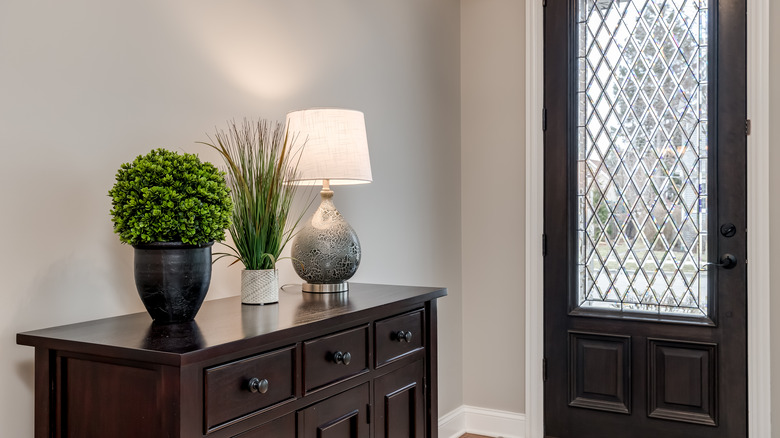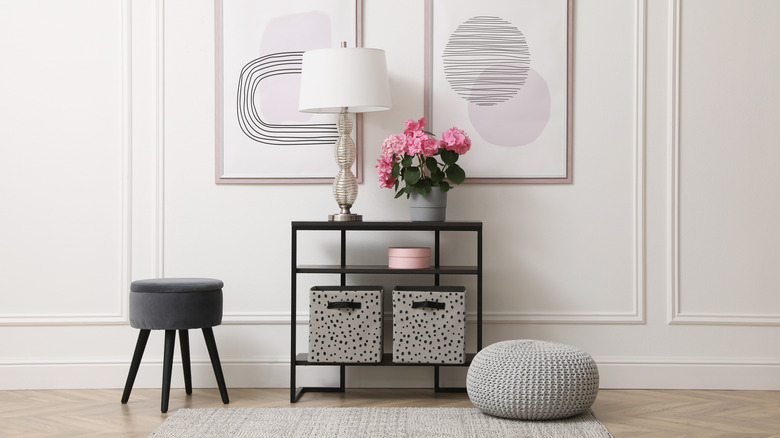Top 3 Ways To Make Your Entryway Feel More Inviting
When guests arrive, your entryway is their first impression of your home. This should be an inviting space that encourages your friends and family to feel like they can relax. It is also an introduction to your house, which gives your guests an idea of what to expect from the rest of your home, according to My Move. A stark, impersonal entryway with harsh light is certainly not inviting, and no one wants to be greeted with piles of shoes and other clutter.
To make your entryway feel more inviting, start by removing everything from the space and take a good look at what you are working with. Is it a harsh, blank canvas? Are the walls dingy or outdated? What kind of lighting do you have? Think of your entryway like any other room of the house to be decorated, just on a smaller scale. Now that you have analyzed the foundation of your space, you can work on the fun part — decorating!
1. Add interest to the walls
Before you start shopping for artwork and accessories, consider the condition of your walls since they are the foundation of the space. This is the perfect time for a fresh coat of paint or even some bold wallpaper. Because this is a small space, it is an excellent opportunity to select a color or pattern that might be overwhelming in a larger room.
If you like to keep your walls neutral, consider adding structural interest like panel moldings or wainscoting, states From House to Home. High board and batten looks great in an entryway and pairs well with hooks for a convenient place to hang guests' coats or bags. Paint, wallpaper, and even adding structural interest are simple and inexpensive DIY projects that create an entirely new atmosphere in your upgraded entryway.
As you decide what to do with your walls, just make sure that the changes you make in this space flow naturally into the rest of your house. Bold wallpaper in the entry may be a good choice if the style of your home is eclectic, but if most of your décor is organic neutrals, the contrast may be off-putting.
2. Use warm lighting
Most entryways have a single overhead light. In homes with lower ceilings, it may be a flush mount light fixture. If you have a higher ceiling, you may have a pendant light or even a chandelier. Although overhead fixtures work well for task lighting, they are usually not very inviting. To improve the quality of overhead lighting, replace bright bulbs with a lower wattage option that puts off a warm light, according to the Milwaukee Journal Sentinel. When you are shopping for lightbulbs, look for the words "soft" and "warm" on the package.
To create a cozy space, bring in a lamp or two with warm, low-wattage bulbs. Combined with the overhead fixture, you still have the light you need, but instead of feeling like you're in a doctor's office, you get an inviting glow. If you have a chandelier, it may not be appropriate or cost-effective to remove or replace it. Instead, work it into your décor, using it as inspiration for the style of your entryway.
3. Accessorize
With the foundation of your entryway in place, it is time to accessorize. Every room needs a focal point, and the entryway is no exception. What do you want people to see when they first walk into your home? A large piece of unique artwork or gallery wall makes a bold statement, states Havenly. Mirrors are also a useful and beautiful addition to an entryway. A large leaning mirror allows you to check for anything out of place before you walk out the door while creating a beautiful focal point that reflects light, making the space feel bigger.
As you bring in accessories, think about what you have in other rooms of your home: seating, hard surfaces, and rugs. A beautifully decorated console table offers a spot to drop your keys. This is a good option if you have a narrow entryway since some tables are as small as 8-inches deep. If you have more space, a bench or a pair of armchairs add softness and comfort to your entryway. Add pillows and a beautiful rug to make the room feel complete.



